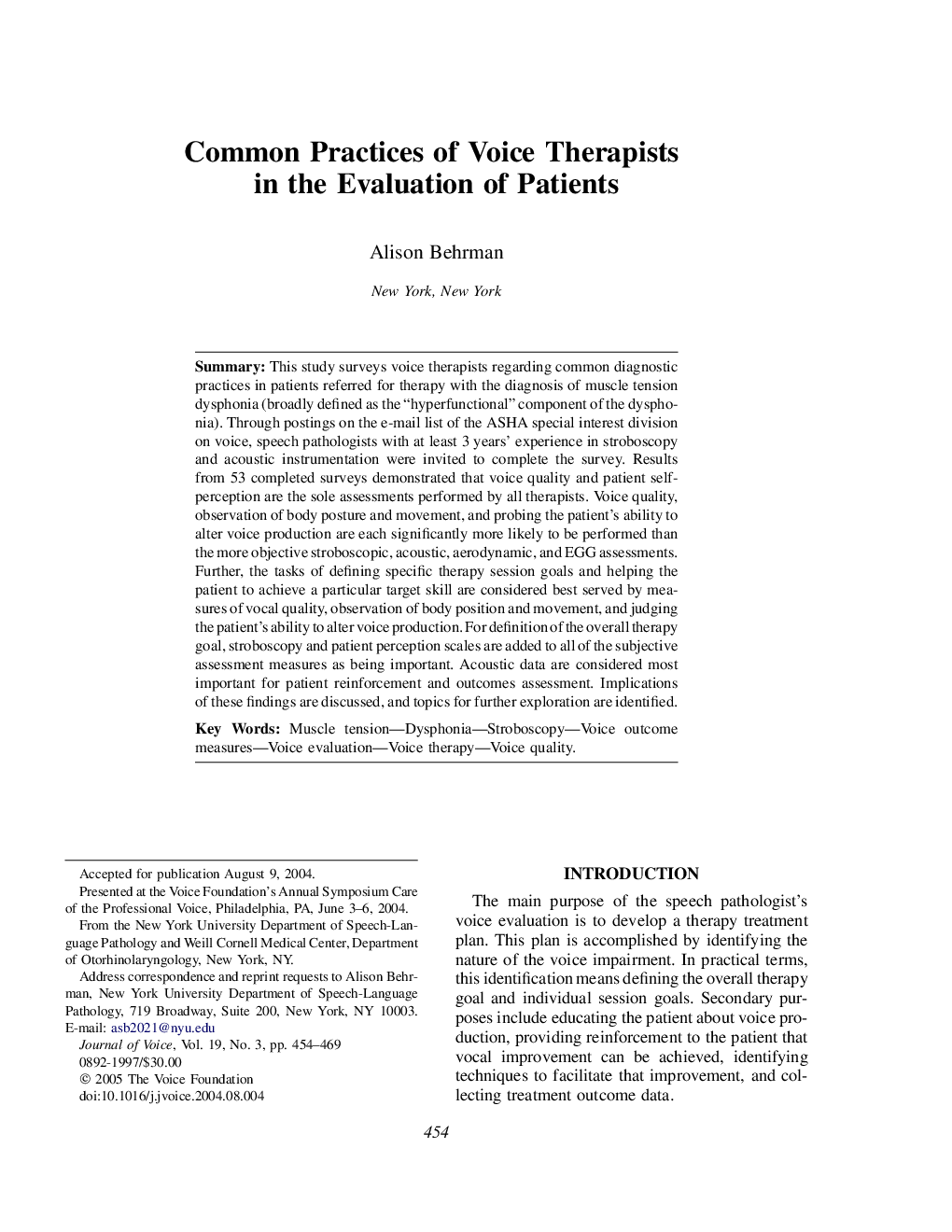| Article ID | Journal | Published Year | Pages | File Type |
|---|---|---|---|---|
| 10519729 | Journal of Voice | 2005 | 16 Pages |
Abstract
This study surveys voice therapists regarding common diagnostic practices in patients referred for therapy with the diagnosis of muscle tension dysphonia (broadly defined as the “hyperfunctional” component of the dysphonia). Through postings on the e-mail list of the ASHA special interest division on voice, speech pathologists with at least 3 years' experience in stroboscopy and acoustic instrumentation were invited to complete the survey. Results from 53 completed surveys demonstrated that voice quality and patient self-perception are the sole assessments performed by all therapists. Voice quality, observation of body posture and movement, and probing the patient's ability to alter voice production are each significantly more likely to be performed than the more objective stroboscopic, acoustic, aerodynamic, and EGG assessments. Further, the tasks of defining specific therapy session goals and helping the patient to achieve a particular target skill are considered best served by measures of vocal quality, observation of body position and movement, and judging the patient's ability to alter voice production. For definition of the overall therapy goal, stroboscopy and patient perception scales are added to all of the subjective assessment measures as being important. Acoustic data are considered most important for patient reinforcement and outcomes assessment. Implications of these findings are discussed, and topics for further exploration are identified.
Related Topics
Health Sciences
Medicine and Dentistry
Otorhinolaryngology and Facial Plastic Surgery
Authors
Alison Behrman,
